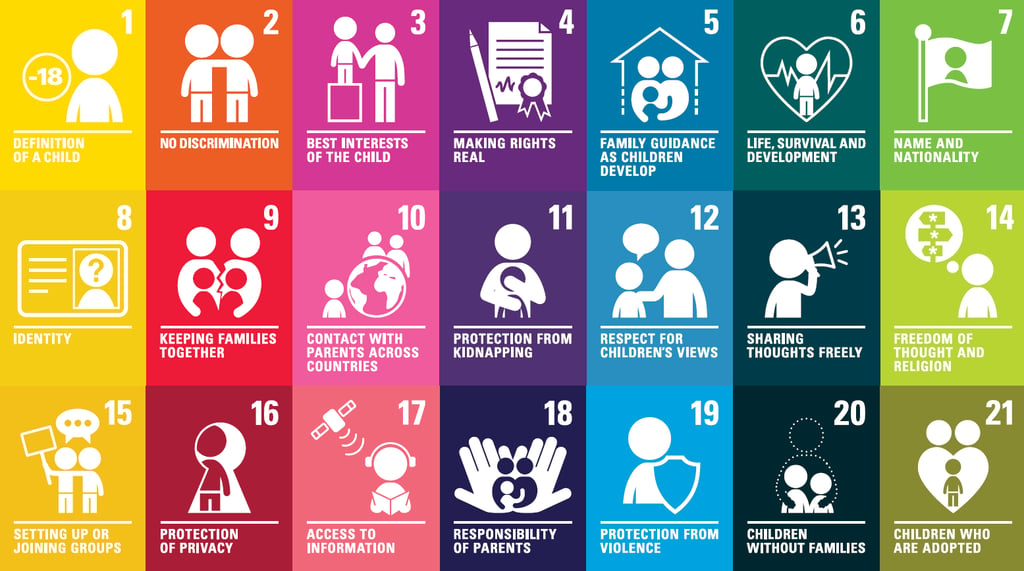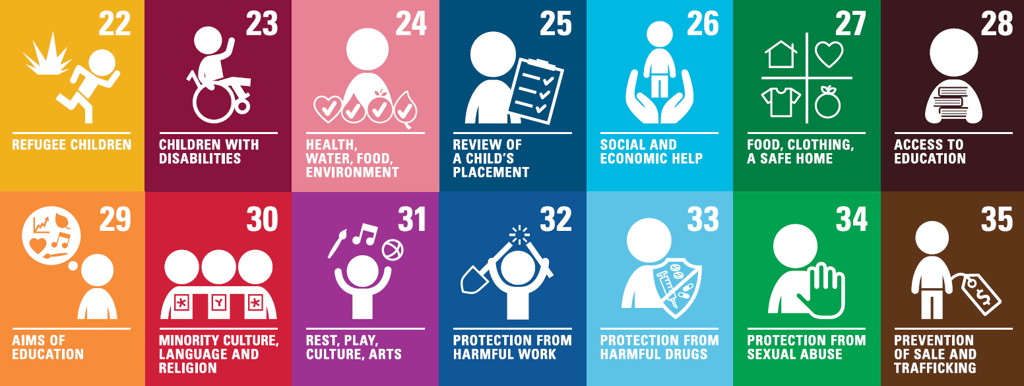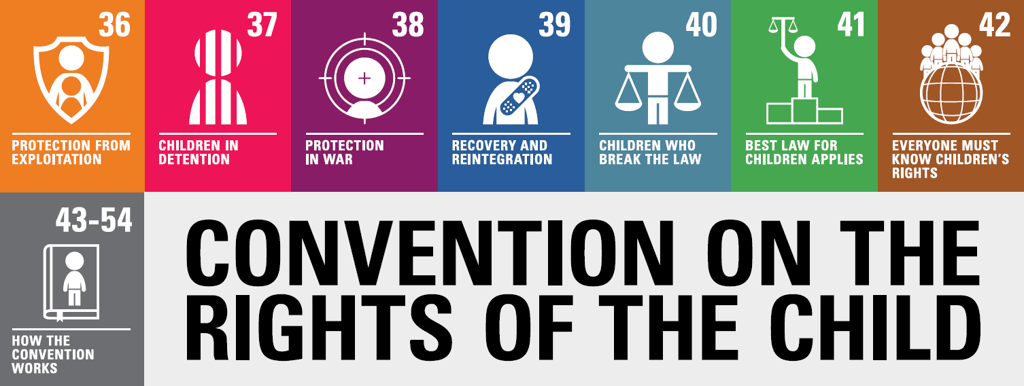
The Child's Rights
Part 1.3 - A look into the current state of children's rights, why they exist, and how they are practically addressed
ISSUE 1
VJ Tlakula
4/24/20257 min read


The Child’s Rights - What and Why
When we discuss child development and what a child is, children’s rights are crucial to at least touch on. This is because children’s rights and the importance placed on protecting and enforcing these rights are often shaped by what we know about children’s developmental needs. In later Issues as we discuss development, I hope to make it more clear why some of these rights really exist, how they help the child and why it is so important not only to uphold them, but also to think critically about them and their implications for the future of childhood.
In this piece I provide an overview of where child rights come from, what they actually are, why they are important, and how they have helped to improve outcomes for the children and the world at large. In Part 2 of it, I also discuss the realities of accessing and enforcing rights and encourage us to think of the social implications of child rights, together with the way forward.
Children’s rights can be a bit tricky to discuss sometimes because there is so much involved in the design and enforcing of these rights. Questions and conflicts often arise, but they are not often discussed in depth or addressed well. I hope to touch on some of this. Sometimes when rights are discussed, they seem to take a Do and Do Not approach and seem like a set of rules trying to force parents to raise their children in ways they may not agree with. I would like us to think of rights as helping to support development, rather than as rules controlling people.
The emergence of children’s rights make sense when we go back to our first piece on what a child is. The rights of the child are all centred around the idea that the child is a human being; an individual who deserves dignity and a healthy life. These rights have been set in place to ensure that that desired outcome becomes a reality. They are not an object, or someone’s property, and should not be subject exclusively to other people’s wills without consideration for how it might affect them. This becomes the lens of the Child’s Rights.
A History
The history of child rights in the western world really took shape during the mid 1800s. This was the time where how people were thinking about children was not lining up with the reality of what children were experiencing. Children were seen as innocent, needing to enjoy themselves and needing their childhood to be protected, yet many worked long, physically demanding hours, lived horrific lives in poverty and suffering, and were being ‘robbed’ of the childhoods they were supposed to experience. The main aims of early child rights and child protection was centred around preventing abuse, tackling child labour, and getting children into schools.
The first real child rights were the Factory Acts from the 1830s. They were aimed at reducing the hours children worked and slowly raising the working age, all in an effort to protect them from being exploited in the workplace. The Forster Education Act of 1870 formalised public education for all social classes (so rich and poor). When education was made compulsory in Britain in the late 1800s, children were permanently removed from the workplace and education became a more central focus for children rather than mere work and survival. Since then, they have been built on and refined.
Modern rights have extended beyond the broad idea of simply protecting children from abuse and labour, to emphasising things like specific forms of protection like identity, home, protection from trade; nutritional development, psychological wellbeing, and shielding from traumatic events. Of particular interest to me are rights and needs such as protection, identity, education, family, community and play. These are further emphasised in later Issues.
What the Rights Are
In 1989, the UN launched the Convention on the Rights of the Child (CRC). It was created in consultation with specialists on childhood from all over the world. This is the most recent, standardised document and inter-country agreement on the state of children and their rights, and nearly all policies and laws concerning children in countries are centred around achieving these rights. This document mostly speaks in depth about how to protect children’s rights and make sure that they are realised. It is not just the list of rights - it is about their entire lives and covers every single individual below the age of 18.
Because children are considered human, they are afforded the basic Human Rights to survival, development, participation, and protection. Children’s rights are a special subdivision designed specifically to address the vulnerable position children find themselves in. Because their entire lives are dependent on how adults treat them, child rights are quite focused on protecting them and them not being made to suffer for being so dependent on others. Child rights are one of the primary ways to ensure children are protected, hold everyone to the same standard, and keep everyone accountable for their treatment of children. In many ways, they are designed to help children realise the best possible outcomes for their lives and be placed on more equitable footing. The main reason these rights exist is because of children’s vulnerability. The consequences of not protecting children will lead to social failure in the future. Their vulnerability and dependence make them especially affected by things, positive and negative, happening in the world, so their futures and the future of societies is held in how well their rights are protected and enforced.
Children’s rights cover all children of all races, countries, sexes, cultures, abilities, religion, belief, and social class. The rights are designed to protect every aspect of the child’s life - the “civil, political, economic, social and cultural” (UNICEF). Rights are aimed at preserving the dignity and life of the child and respecting them as an individual worthy of rights and life. They strive to protect children’s families and social communities. The rights also concern making sure that the child’s environment is safe for their physical and mental development and wellbeing. They allow children the ability and access to think, explore and learn, both formally and informally, and express their thoughts without fear of consequences. They emphasise that differences must be respected and allowed to be practised. All forms of possible abuse and exploitation are covered in this document, and they clearly speak to society’s responsibility to care for the child well. It is important that everyone knows children’s rights and teaches their child their rights - the United Nations (UN) even provides understandable documents for this purpose.
How the Rights Have Changed Childhood and the World
The emergence of child rights in the 1800s played a huge role in going from those ideological and romanticised ideals of childhood to practically turning them into a reality. They also were a step in equalising social classes. They solidified childhood as a stage which needed to be respected differently, protected, and allowed its own forms of autonomy. Before, children from wealthier families were more likely to be protected and thrive socially, and different parts of childhood were valued and promoted across social classes. For example, education and art may have been more prioritised and encouraged among wealthier children. Boys and girls were also afforded different privileges with boys getting more opportunity for social advancement. However, when rights came onto the scene, they created room for all children to be brought onto a level playing field with less differentiation between boys and girls.
It is undeniable that the existence of children’s rights has protected most of them from the dangers of the world and opened up more opportunities for brighter futures. It has, in many ways, completely changed the way children experience the world, and how we value and see them. It is because of children’s rights that many of us have accessed the opportunities we have. Healthcare, education, social housing, social support has all been developed with children’s welfare in mind. These rights have helped to hold countries and national governments more accountable for the health, education, protection, and dignity of children. As more attention has been paid to the special stage that children are in, more research has been done to understand how they develop and how best to help them.
Out of basic child rights, numerous policies, organisations, and departments have emerged with the aim of protecting children and promoting healthy childhood development. In many countries, nationwide, accessible public education exists for children and within a lot of those spaces, children are provided with meals. Many children’s playgrounds and parks exist to promote exploration and exercise. Public health programmes have evolved to not only cover the physical health of the child, but also their overall wellbeing as well as their caregiver’s. More people are sensitive to instances of child abuse and exploitation. These rights forced governments to prioritise the wellbeing of children. The laws have also given children a more respected voice and acknowledged their individuality.
Closing Thoughts
We have seen that the emergence of children's rights has a heavily social and not very objective basis, yet they have definitely improved the lives of children in many ways. In the next piece, I discuss the social considerations of child rights. Read Child Rights - A Discussion here.
Share your Comments Below!
Please feel free to reach out with any comments, questions, and child-related stories
Celebrating childhood and development
© Ntsako Wholeness and Joy in Childhood 2025. All rights reserved.
Copyright Vutlhari Joy Tlakula 2025. All Rights Reserved.








